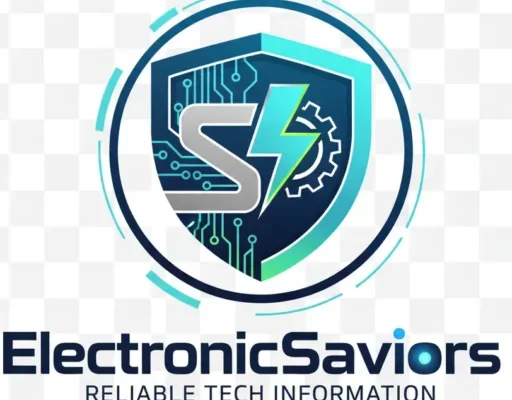A DOL starter, or Direct-On-Line starter, is one of the simplest and most commonly used methods for starting electric motors, especially three-phase induction motors. It’s widely used in industries and other applications due to its low cost, easy operation, and reliable performance.
This article will guide you through what a DOL starter is, how it works, its components, advantages, limitations, and where it is typically used.
What is a DOL Starter?
A Direct-On-Line (DOL) starter is an electrical device used to start electric motors by applying the full line voltage directly to the motor terminals. It is suitable for small motors where high starting current does not damage the motor windings or affect the power supply.
When the motor is switched on using a DOL starter, it draws a large current, known as the inrush current, which can be 6 to 8 times the rated current. However, for motors up to 5 HP (Horsepower), this method is safe and effective.
Key Components of a DOL Starter
A basic DOL starter consists of a few essential components:
-
Contactor
An electromechanical switch that connects or disconnects the motor from the power supply. -
Overload Relay
Protects the motor from excessive current by breaking the circuit if it detects an overload. -
Start and Stop Buttons
These push buttons allow manual control to start or stop the motor. -
Fuses or Circuit Breakers
Provide short-circuit protection. -
Auxiliary Contacts
Help in holding the circuit or performing interlocking functions.
How Does a DOL Starter Work?
Here’s a step-by-step explanation of the working process:
-
When the start button is pressed, the contactor coil is energized.
-
This pulls the contactor, connecting the motor directly to the three-phase supply.
-
The motor starts running at full voltage.
-
The overload relay constantly monitors the current.
-
If the motor draws excessive current for too long, the overload relay trips and stops the motor.
-
To stop the motor manually, pressing the stop button de-energizes the contactor, disconnecting the supply.
Advantages of DOL Starter
-
Simple design
Easy to install and maintain. -
Low cost
Budget-friendly compared to other motor starters. -
Quick startup
Motor reaches full speed almost instantly. -
Reliable performance
Fewer components reduce the chance of malfunction.
Disadvantages of DOL Starter
-
High starting current
Can cause voltage dips in weak power systems. -
Mechanical stress
Sudden torque can damage motor parts over time. -
Limited to small motors
Not suitable for motors above 5 to 10 HP, depending on the supply system.
Applications of DOL Starter
DOL starters are ideal for applications where motors have:
-
Low starting torque requirements
-
Stable power supply
-
Motor rating below 5 HP (sometimes up to 10 HP depending on utility standards)
Common Use Cases:
-
Water pumps
-
Small compressors
-
Conveyor belts
-
Agricultural equipment
-
Fans and blowers
Comparison Table: DOL Starter vs Star-Delta Starter
To better understand how DOL starter stands against another popular method, here’s a comparison with the Star-Delta starter:
| Feature | DOL Starter | Star-Delta Starter |
|---|---|---|
| Starting Method | Full voltage applied | Reduced voltage at start |
| Starting Current | High (6-8 times rated) | Moderate (2-3 times rated) |
| Starting Torque | High | Lower during start |
| Circuit Complexity | Simple | More complex |
| Cost | Low | Higher |
| Suitable for Motors | Up to 5-10 HP | Above 10 HP |
Safety Considerations
While DOL starters are simple, safety is crucial:
-
Always ensure proper earthing of motor and control panel.
-
Use a properly rated overload relay to protect against overheating.
-
Never bypass the stop button or overload relay.
-
Only qualified personnel should work on the starter.
People Also Ask
What is the function of a DOL starter?
A DOL starter directly connects the motor to the full voltage supply, allowing it to start immediately. It includes protection features like overload relays to safeguard the motor.
Why is DOL starter not used for large motors?
Large motors draw very high starting current when connected directly, which can damage the motor and cause voltage drops in the network. Other starters like Star-Delta or Soft Starters are preferred in such cases.
Can a single-phase motor use a DOL starter?
Yes, DOL starters can be used for single-phase motors as well, but they are more common with three-phase induction motors.
What is the maximum HP limit for a DOL starter?
Generally, DOL starters are used for motors up to 5 HP. In strong supply networks, it may go up to 10 HP, but beyond that, alternative starters are recommended.
What is the difference between a contactor and a relay in a DOL starter?
A contactor handles the high current to switch the motor on/off, while a relay (specifically an overload relay) protects the motor from overcurrent conditions.
Conclusion
The DOL starter is a fundamental component in the world of electrical motor control. Its simplicity, affordability, and reliability make it a popular choice for starting small motors in both industrial and domestic environments. Although it’s not suitable for larger motors due to high inrush current, it remains an effective and practical solution in countless applications.
Understanding how a DOL starter works and where it fits best allows for safer and more efficient electrical system design. Whether you’re a technician, student, or enthusiast, learning about DOL starters gives a strong foundation in motor control systems.
